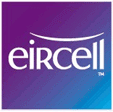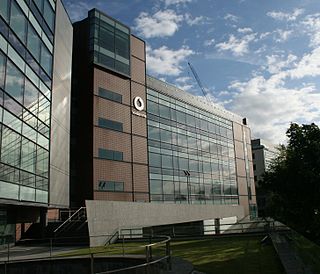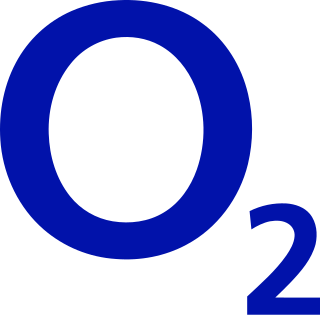
Short Message/Messaging Service, commonly abbreviated as SMS, is a text messaging service component of most telephone, Internet and mobile device systems. It uses standardized communication protocols that let mobile devices exchange short text messages. An intermediary service can facilitate a text-to-voice conversion to be sent to landlines.
Telecommunications in the United Kingdom have evolved from the early days of the telegraph to modern broadband and mobile phone networks with Internet services.

Telecom Éireann was an Irish state-owned telecommunications company that operated from 1983 to 1999. Prior to then a telephone and postal service was provided by the Department of Posts and Telegraphs, as part of the civil service. Telecom Éireann was established by the Postal and Telecommunications Services Act, 1983; its full formal title was "Bord Telecom Éireann or, in the English language, The Irish Telecommunications Board". "Telecom Éireann" may be translated as "Telecom of Ireland". In 1999, the company was privatised and renamed as eircom.

Eircell was an Irish mobile cellular network provider which was established in 1984, with operations commencing in 1986. Its access code was 088 for the original analogue TACS system and 087 for the later GSM system. Following the abolition of the Department of Posts and Telegraphs, Eircell fell under the remit of Telecom Éireann, which today is known as Eir. The Eircell brand became defunct in 2002 following its acquisition by Vodafone. From 2001, Eircell underwent a major branding exercise after its acquisition by the Vodafone group in December 2000. The main branding was to associate a shade of deep purple with the company. When Vodafone rebranded with its trademark shade of red, the company commented that "red is the new purple". The company was known as Eircell-Vodafone for some time as the process took nine months in total.

Vodafone Group Plc is a British multinational telecommunications company. Its registered office and global headquarters are in Newbury, Berkshire, England. It predominantly operates services in Asia, Africa, Europe, and Oceania.

Vodafone Ireland Limited, a wholly owned subsidiary of the Vodafone Group, is a mobile phone network and broadband provider in Ireland. It was created when the Vodafone Group bought Eircell, the mobile arm of Telecom Éireann. As of September 2019, Vodafone has 26% of broadband subscribers, and 43% of mobile phone subscribers.
1G refers to the first generation of cellular network (wireless) technology. These are mobile telecommunications standards that were introduced in the 1980s and were superseded by 2G. The main difference between these two mobile cellular generations is that the audio transmissions of 1G networks were analog, while 2G networks were entirely digital.
Vodafone Limited, trading as Vodafone UK, is a British telecommunications services provider, and a part of Vodafone Group Plc, the world's second-largest mobile phone company. Vodafone is the third-largest mobile network operator in the United Kingdom, with 18.5 million subscribers as of February 2024, after O2 and EE, followed by Three. The country's first cellular phone call was made on the Vodafone network in 1985.
A mobile phone operator, wireless provider, or carrier is a mobile telecommunications company that provides wireless Internet GSM services for mobile device users. The operator gives a SIM card to the customer who inserts it into the mobile device to gain access to the service.

The StarTAC is a series of mobile phones released by Motorola starting in 1996. It is the successor of the MicroTAC, a semi-clamshell design first launched in 1989. Whereas the MicroTAC's flip folded down from below the keypad, the StarTAC folded up from above the display. The StarTAC was among the first mobile phones to gain widespread consumer adoption; approximately 60 million StarTACs were sold.
Wi-Fi calling refers to mobile phone voice calls and data that are made over IP networks using Wi-Fi, instead of the cell towers provided by cellular networks. Using this feature, compatible handsets are able to route regular cellular calls through a wireless LAN (Wi-Fi) network with broadband Internet, while seamlessly change connections between the two where necessary. This feature makes use of the Generic Access Network (GAN) protocol, also known as Unlicensed Mobile Access (UMA).
Mobile number portability (MNP) enables mobile phone users to retain a mobile telephone number when changing the mobile network operator.
The Excel/Excell marketed a range of mobile phones developed by the British company Technophone in the 1980s. These mobile phones were advertised as the smallest, lightest most intelligent mobile phones in the world at that time, and were the first to fit in a pocket. While larger than later mobile telephones at 7 inches tall, 3 inches wide and 1 inch deep, they were still more compact than other mobile cell phones of their time, which included models by Motorola and Stornophone, as well as dedicated car phones.

The Motorola MicroTAC is a cellular phone first manufactured as an analog version in 1989. GSM-compatible and TDMA/Dual-Mode versions were introduced in 1994. The MicroTAC introduced a new "flip" design, where the "mouthpiece" folded over the keypad, although on later production the "mouthpiece" was actually located in the base of the phone, along with the ringer. This set the standard and became the model for modern flip phones today. Its predecessor was the much larger Motorola DynaTAC and it was succeeded by the Motorola StarTAC in 1996. "TAC" was an abbreviation of "Total Area Coverage" in all three models.

China's mobile phone industry or cell phone industry has high growth rate, raising its share on the global mobile phone market. During 2007, 600 million mobile phones were made in China which accounted for over 25 percent of the global production. China is the largest market in terms of mobile phone subscribers.
The history of the prepaid mobile phones began in the 1990s when mobile phone operators sought to expand their market reach. Up until this point, mobile phone services were exclusively offered on a postpaid basis (contract-based), which excluded individuals with poor credit ratings and minors under the age of 18 In early 1991, Kenneth Johnson of Queens, New York along with Mark Feldman, Pedro Diaz and Kevin Lambright of Alicomm Mobile, was the first to successfully create a prepaid cellular phone and Network. His company expanded to a Sales force from Maine to Florida. Two years later others would come out with similar systems.

Telefonica UK Limited, trading as O2 UK (stylised as O2), is a British telecommunications services provider, headquartered in Reading, England which operates under the O2 brand. It is owned by VMED O2 UK Limited, a 50:50 joint venture between Telefónica and Liberty Global. O2 is the UK's largest mobile network operator, with 23.8 million subscribers as of May 2023.
Tinno Mobile is a Chinese ODM company focused on making phones for other brands. The company have also created their own mobile phone brands like Sugar Phone, and Wiko Mobile. The company was established in 2005 and is headquartered at Shenzhen, Guangdong, China.
Tiantong is China's first mobile communications satellite system. The first satellite Tiantong-1-01 was launched on August 6, 2016 (UTC+8).









